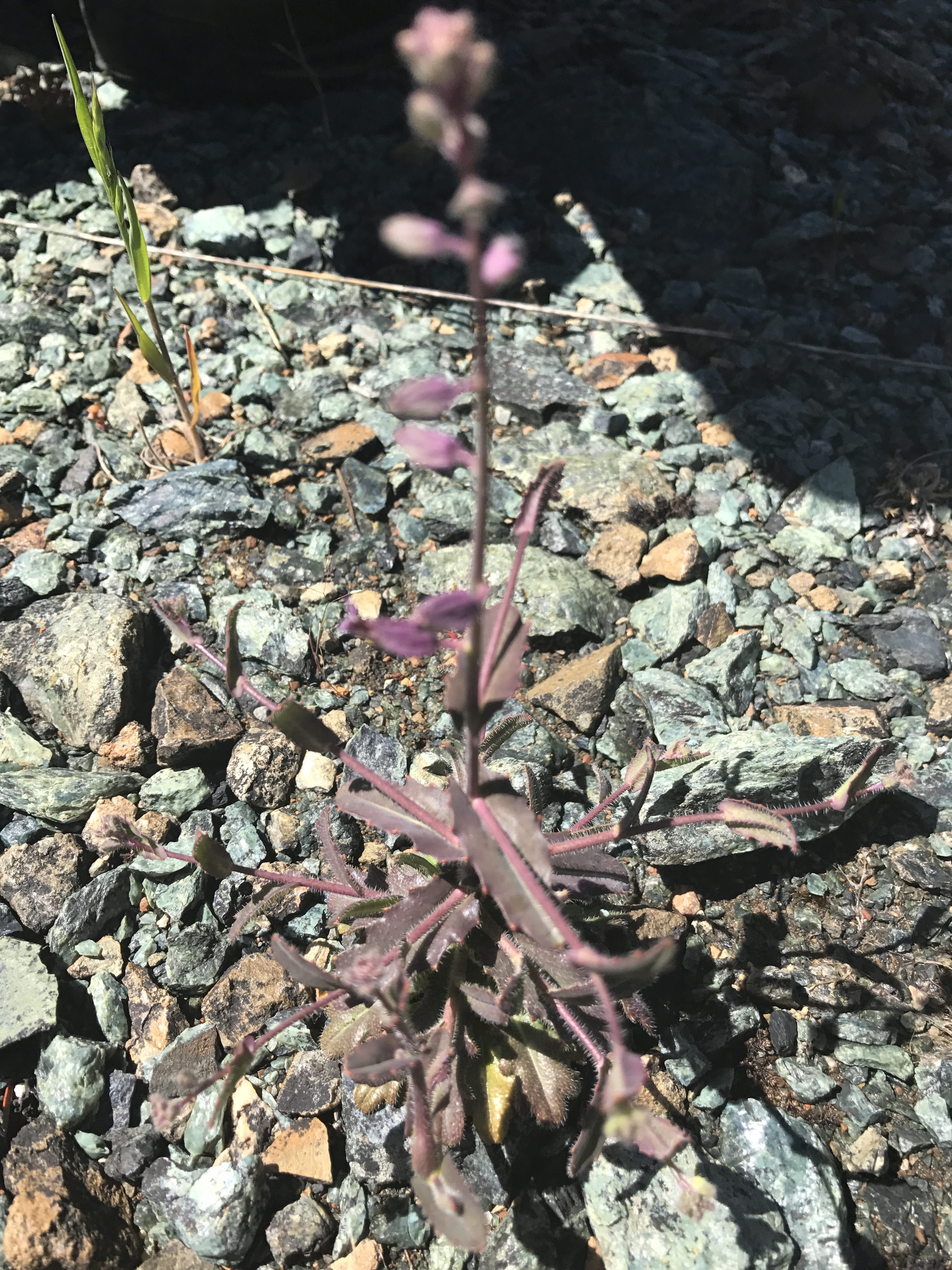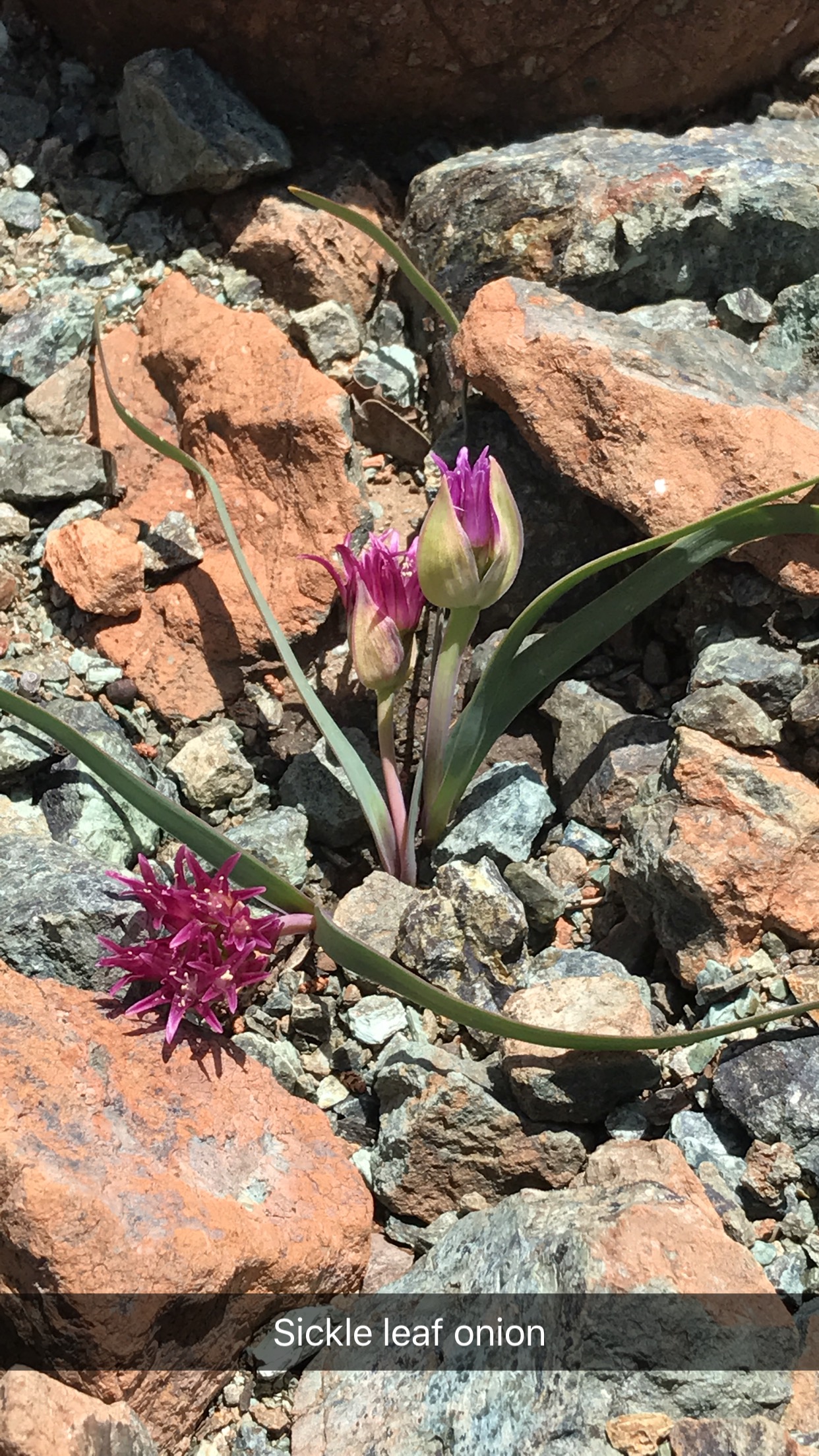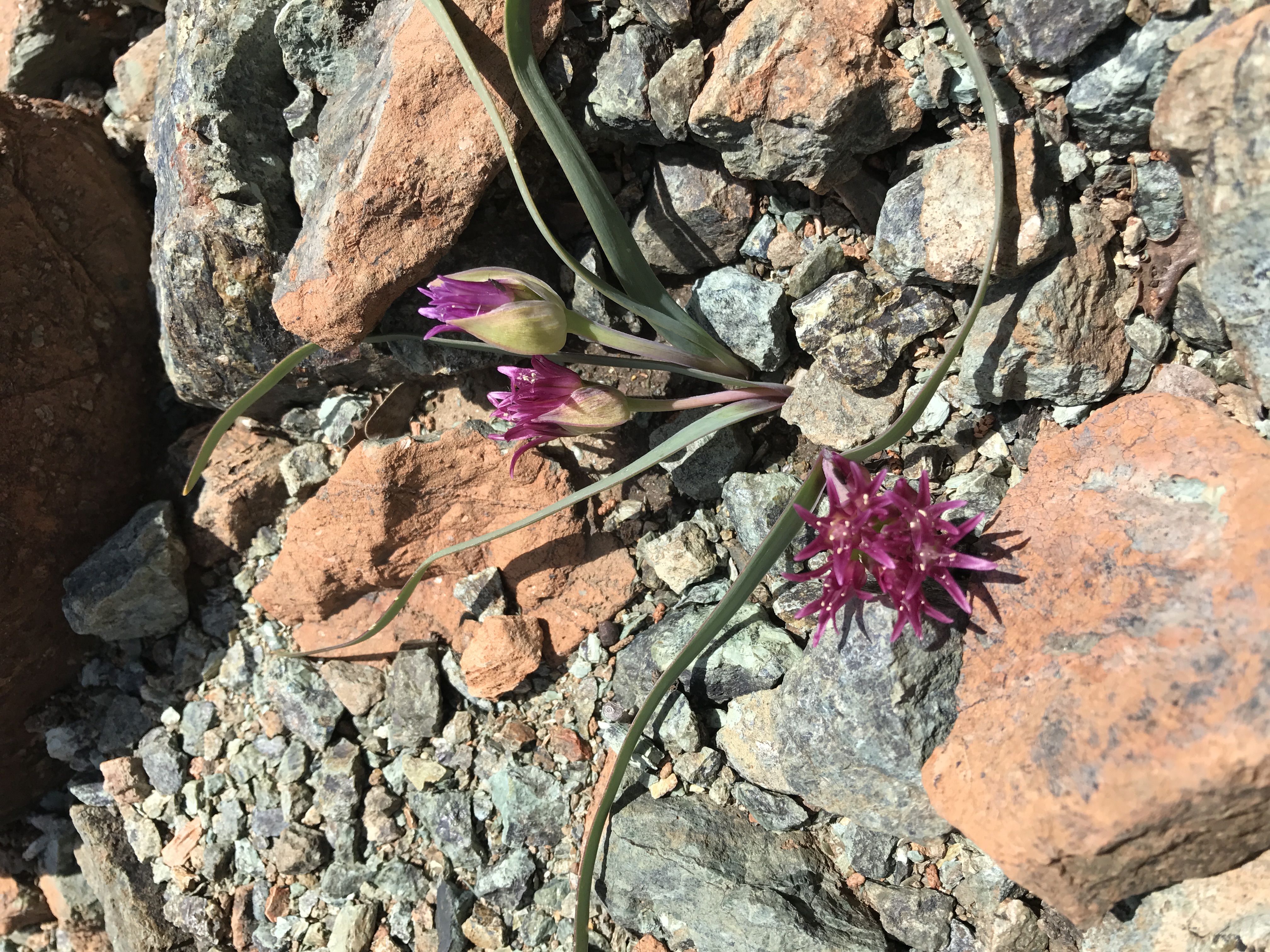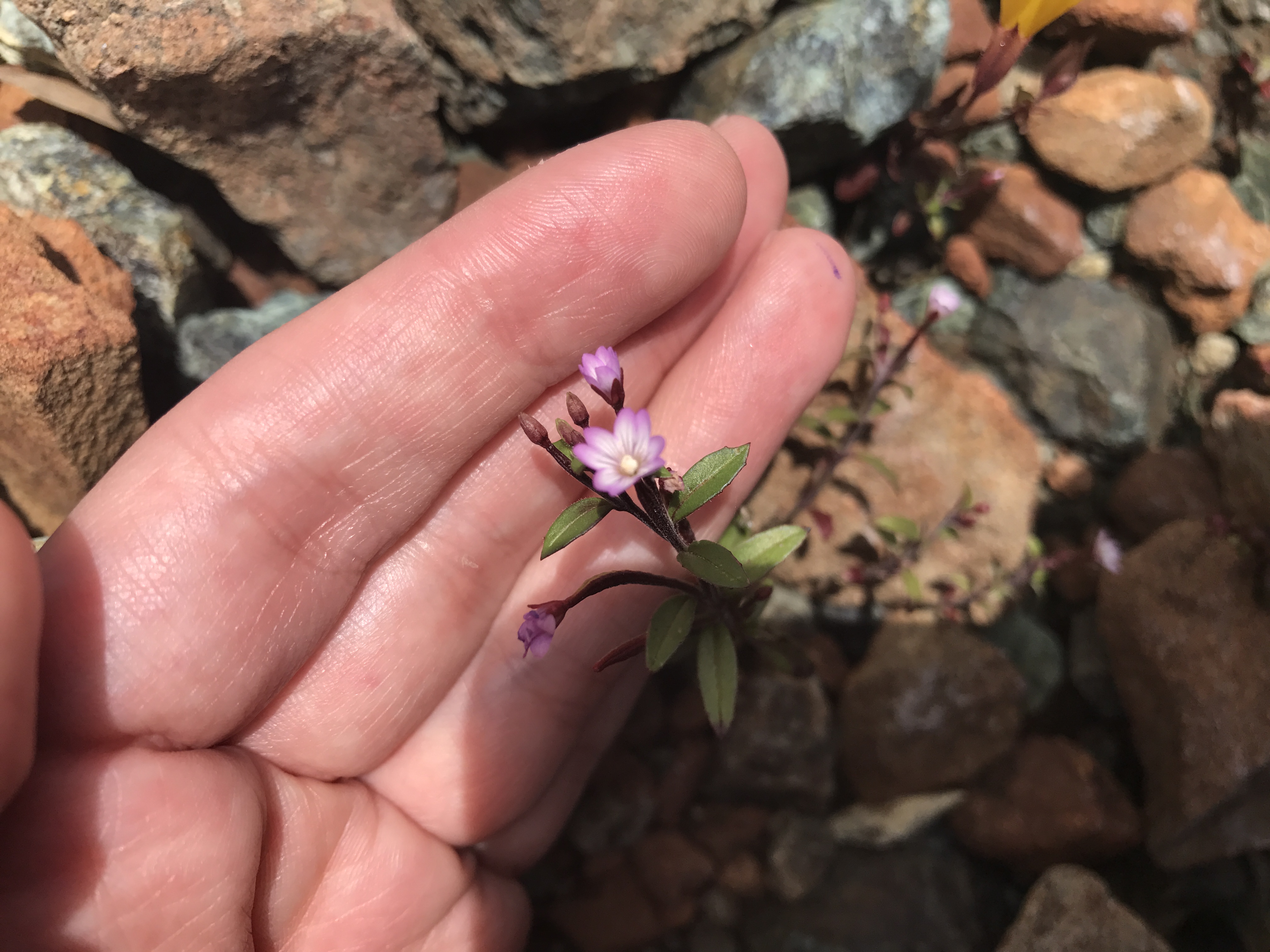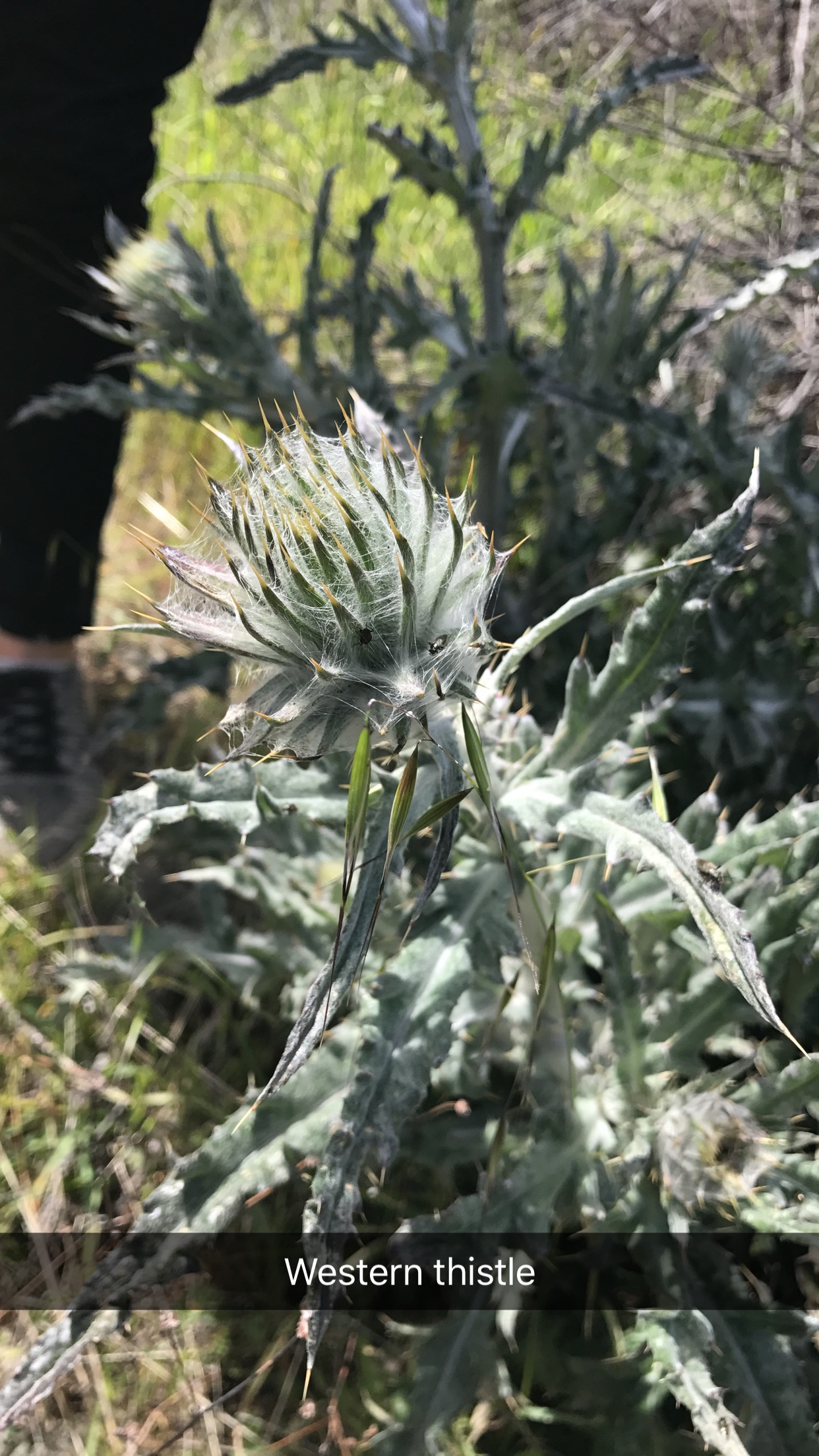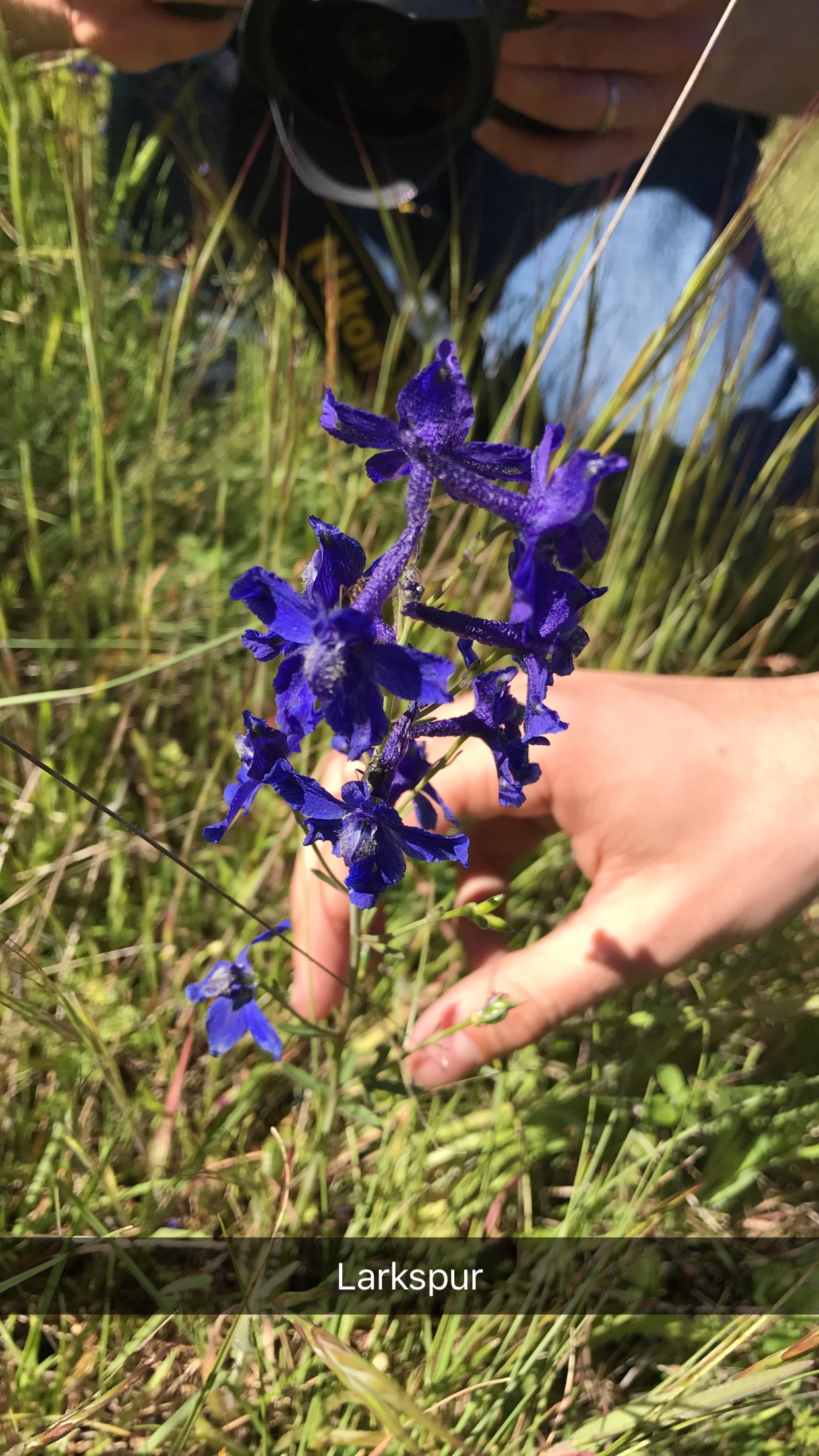Botany Field Journal #9
Date: 27 April, 2017
Location: Mt. Tam (37.92355,-122.59647), elevation: 783.9 meters
This picture illustrates the directions from the University of San Francisco to Mt. Tam.
Site description:
We made multiples stops on this trip. After taking a class photo, we arrived at our first site, which was right by the middle peak and it was composed of serpentine sites. We saw many serpentine rocks and species in this region that were small serpentine endemics/tolerators. There were also a bunch of chamise at the beginning of our trip and the trail consisted of coastal shrub. We saw many orobanchaceae and fabaceae families. The second site was called “rocksprings.” We took the Bensten Spur trail and saw the beautiful Mt. Tam jewel flowers here, which is very rare. We also saw a big Douglas fir and gold cup live oak. As we made our way back to the cars, we saw many lupinus and blue eyed grass species.
Species descriptions and digital collections: These pictures illustrate the three species of plants that I have chosen to describe in my blog.
1) Genus and Species: Streptanthus glandulosus pulchellus
Common name: Mt. Tamalpais Jewel flower
Family: Brassicaceae
Species Description:
This annual herb is a native hairy species and it’s very rare. This species is endemic to Marin County, California. It has four petals with a purplish color. The narrow petals flare out above a colorful pouch that’s luminous like a gem. Leaves at the base of the stem are oval or lance-shaped with toothed margins. They are fleshy in texture and are pretty small. Another species called the Tamalpais jewel flower was also once found here a long time ago, which has cryptic-like leaves but we did not see it on our trip.
2) Genus and Species: Allium falcifolium
Common name: Sickle leaf onion
Family: Alliaceae
Species Description: this is a perennial native herb. It has long sickle-like leaves in addition to a magenta inflorescence. There are about six white stamens inside. It has parts of three and it is tolerator to almost endemic. It is found in open areas and it is deciduous. The simple leaves are basal and linear with entire margins and parallel venation.
3) Genus and Species: Epilobium minutum
Common Name: Small willowherb
Family: Ongraceae
Species Description: This species is a native, freely branched annual wildflower and has soft hairs. This species grows in dry open areas. This plant likes nitrogen-rich soils. The flowers exist in the axils of the terminal, alternate leaves. They are very small and they vary in color from white to pale pink to red. They have an inferior ovary. The leaves are oblong to lanceolate and have a short petiole. They are mostly opposite.
Narrative:
We explored multiple serpentine sites at Mt. Tam on our field trip. We first stopped to take a class photo. Then, we continued onto our next site, which consisted of a rocky trail with a bunch of pointy Chamise. Professor Paul introduced us to multiple small serpentine tolerators and we finally got to see the beautiful Mt. Tam Jewel flower. Thankfully we didn’t encounter any rattlesnakes but we did see multiple lizards and a little cute frog. One of the most interesting species that we saw was the Western thistle but it was a bit scary with the sharp pointy edges and lots of bugs on it. We got to take more photos after seeing a larkspur. We then headed to the cars. Professor Paul brought popcorn for all of us hungry college students, which was very nice and made us all very happy. I look forward to the next field trip.
Here’s a very happy Negin 😀



